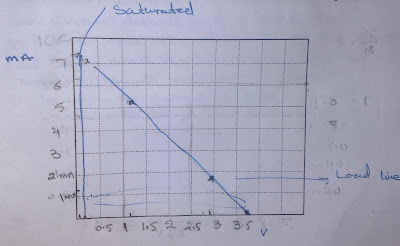Adjustable linear regulator is used to support the input voltage and output voltage. In this circuit the supply voltage is 12V and various components are used to far the purpose of voltage drop and an LED to physically see if the circuit is working, (warning light) and capacitors are used to store energy and release back when switch is off.
The purpose of this circuit is to find out the value of voltage out as we did in our calculation which was 5V this gain value depends on the value of resistors R3 and R2 from the formula.
V Out = V Ref ( 1 + R3 / R2 ) Ld = 20mA = 0.02 A
5V = 1.25 ( 1 + R3 / R2 ) V = 5V - 1.8V
4 - = R3 / R2 Ld = 3.2V
3 R2 = R3 R1 = 3.2V / 0.02A = 160 Ohms
Zd = 22V
D1 = 0.7V
D2 = 0.7V
R1 = 160 Ohms
R2 = 220 Ohms
R3 = 660 Ohms

Test
Checked the available voltage in various points, the result was positive checked the circuit for the voltage drop in D13 which is 0.75V and the voltage drop is 10.70V for both D15 Zener diode and C15 (capacitor), voltage drop across D12 as 5.02V, across R2 is 1.24V, across R3 is 3.78V, across C16 is 5V, across R1 is 3.02V and across LED is 2.00V.
From our test it showed that output voltage is exactly 5.02V that is what we got in our calculation.

The output voltage in the figure below is show 5.16V as the input was 13V
Problems
When i built the circuit from the diagram which was designed on the Loch Master software, the results were negative, first i have put the NO 13 input diodes in opposite side which was blocking the voltage supply to the circuit, and after finding the problem I have overcome the problem by positioning the diodes correctly. The output reading was also showing 12V which was suppose to show 5V. The cause for that was poor connection and i have fixed the problem by soldering correctly and tested the circuit afterwards, it worked correctly. The readings of my circuit were exactly as stated under tests above.
Reflection
I have came across few issues while building this circuit, however after digging a bit deeper into the problem i have found the root cause for them and overcame all problems, this was a good lesson and it has made the process much easier for my next circuit.


















